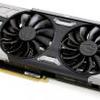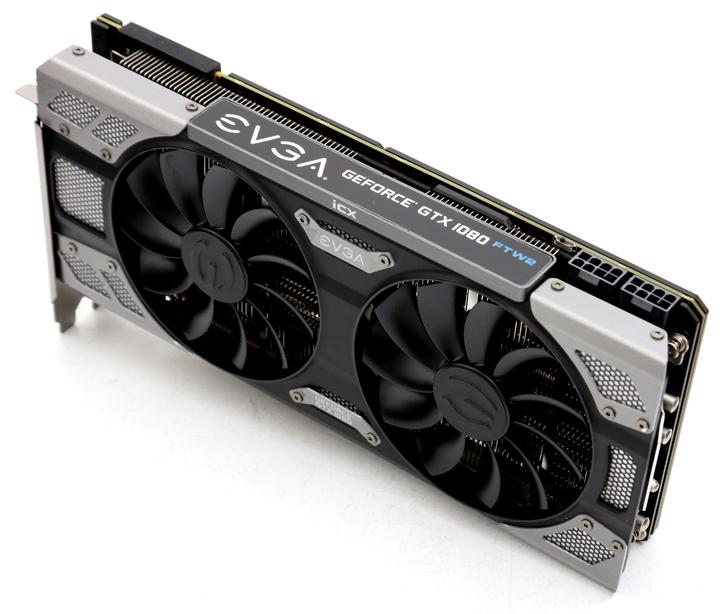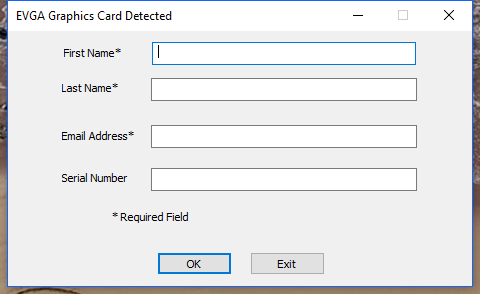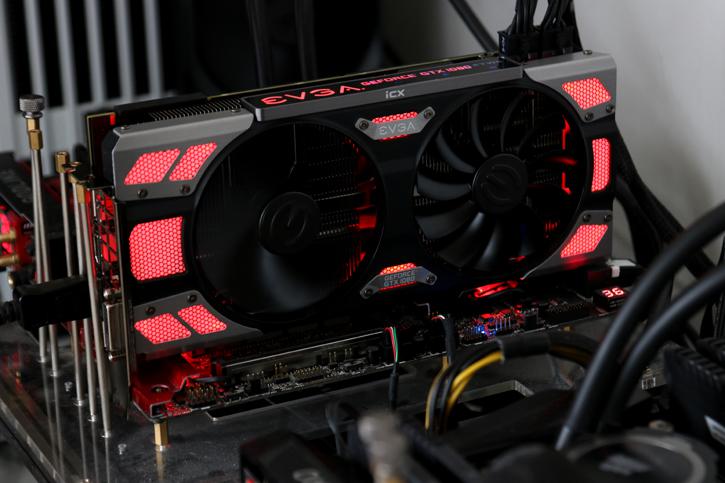Conclusion
Conclusion
EVGA is doing some funky stuff with the ICX cooling and sensor design. This is a nice looking product that offers great game performance. Admittedly, I like the idea of more sensors to monitor various parts of the board. I also have to admit that if you watched them a couple of times, you'll probably never check the values again. In my personally believe EVGA reacted (maybe even over-compensated a little) towards the backlash they got with the non-cooled VRM segments in the initial FTW and SC editions. It is a completely understandable reaction, however if you do things right in the first place, you do not have to overcompensate. All it took was 50 cents of thermal padding leading towards the cooling block/plate and boom, the problem was gone. But hey, I like the many temperature sensors, but also believe that 98% of the end-users will look at temp monitoring once or twice and then never again. Implementations like these do cost more (albeit not much). Then again added benefit for EVGA is differentiation, a word so important and key for the board partners. The ICX design definitely falls into that category. That said, the cooler is performing okay but is just that, the noise levels however are moderate and can be considered somewhat on the high side.
The FTW2 has a very nice design and LED implementation. EVGA is making use of proper components selection and of course a nice three year warranty with respectable after-sales. Performance wise the reality remains that the differences in performance in-between all tweaked 1080 models is negligible. From top to bottom perf has increased a bit mainly to driver updates. But I mean to date we have tested like over ten tweaked SKUs from varying manufacturers and the differences in-between ALL cards are like maybe 4 FPS give or take 1 FPS. The problem with the highest-end SKUs is that they are more expensive, and that extra money sometimes does not justify the little performance gain. Nvidia lowered pricing on the 1080 towards 499 USD, this FTW2 model is priced at $569 and here in the EU that price hovers in the €669 marker. With the FTW2 ICX you are looking at that factory higher clock frequency and the LED logos with a dual-fan cooler and a back-plate. Depending on the clock frequency modes you choose to use you may expect that dynamic boost clock hovering at the 1.95 GHz marker with the default clocks and yes that is a faster compared to the founder editions. It does seem that the Pascal generation scales a little less compared to Maxwell in terms of relative tweaking/overclocking performance.
Them Aesthetics
The FTW2 is good and proper looking product, a nice black PCB with dark and grey elements. The looks are nice with that LED (RGB) lit design at the front. Also the top some RGB lit stuff is going on, all configurable and obviously if you dislike LEDs, you can turn them off as well. Cool dibs is that back-plate, it has openings at the proper areas however was closed at the VRM area for a bit more venting. Not an issue as the VRM area does not heat up significant enough to worry me at all. EVGA placed thermal padding on that location, hence it could not have been an open segment of the backplate. Yes, I remain skeptical about back-plates, they potentially can trap heat and thus warm up the PCB. But the flip-side is that they do look better and can protect your PCB and components from damage. As thermal images have shown it does work and that GPU runs roughly 74 Degrees C under full load and its factory tweaked settings. Consumer demand is always decisive, and you guys clearly like graphics cards with back-plates.
The not so cool
Please allow me to write about a bit of a personal annoyance of mine. We get that companies would like to tie you to them, hey they want you as close as possible to make sure the next time you buy their products again. Totally fine, however the harvesting of data is slowly getting the industry in a grip that I do not consider to be normal or okay. EVGA does this as well on a bit of an arbitrary level. To be able to control the LEDs or monitor the sensors on the FTW2 you are bound to use their PrecisionXOC software. Totally fine. However, to be able to download it you must have a registered forum account at EVGA, login and only then you can even download the file. There's already where my annoyance starts, but hey ... still OK. However after you downloaded and startup the application you get this:
So here's my irritation of the day, once you startup PrecisionXOC software for the first time, you get to see the requester box like shown above. This is a mandatory step as you are required to fill out data including your email address. If you do not want to provide that information, PrecisionXOC will exit and you cannot use it. This right here for me alone could, actually would be enough reason to not make a purchase. Again, a lot of people are not bothered by this stuff.
Cooling & Noise Levels
The reference design (founder editions) of the GTX 1080 are set at an offset threshold of 80 degrees C. Once the GPU gets warmer the card will clock down / lower its voltage etc to try and keep the card cooler, that's throttling and it part of the design. The EVGA cooler is good, but not at the same level as the ASUS STRIX, MSI Gaming X or Gigabyte Aorus WindForce and here is why. The cooler is sufficient, but EVGA needs to ramp RPM down in order the prevent the card becoming too noisy. This is why you see slightly higher GPU temps compared to the competition as they simply need to maintain and manage the noise level. Also the two fans can be controlled separately from each other, MSI did this in the past and that idea failed. I am inclined the say the same with for this card. Once the card heats up only one fan spins, once a segment like VRM and/or GPU get too hot the 2nd fan kicks in. At that point it'll quickly spin up towards a high RPM and then gradually lower that RPM gradually a few seconds later. Due to that 'lag' the GPU already heated up a few degrees more but more annoyingly, you can hear that high RPM spin + you can hear two different types of fan noises for a little while. IMHO just keep things simple, have two fans spin at the same low RPM and you do not have to tackle stuff like this. In essence I feel it creates more issues compared to the benefits it is supposed to offer. It certainly isn't a desired feature for me. Up-to a degree or 60 on the GPU this card remains passive though and thus inaudible. Once the fans kick in, you can expect to hover at the 74 Degrees C marker, with seriously demanding games. Please do note that you will need proper ventilation inside your chassis. I've stated a thing or two on noise levels already, expect sound pressure values in the 42 dBA range at max under load and warm circumstances. That's measured 75 CM away from the PC. This means you can hear airflow at a moderate level. We did not hear significant enough coil whine noises.
Energy efficiency
Any GP104 Pascal GPU and thus GP104 based graphics card is rated as having a 180 Watt TDP under full stress, our measurements show it to be at the 190 Watt range on your average gaming session, likely due to the faster clocks and accompanied voltage usage. At this performance level you are looking at a card that consumes roughly 400~450 Watts for a stressed PC in total, that is okay. We think a 500~600 Watt PSU would be sufficient and if you go with 2-way SLI say a 750 Watt power supply is recommended. It's definitely more than needed but remember - when purchasing a PSU, aim to double up in Wattage as your PSU is most efficient when it is under 50% load. Here again keep in mind we measure peak power consumption, the average power consumption is a good notch lower depending on GPU utilization. Also, if you plan to overclock the CPU/memory and/or GPU with added voltage, please do purchase a power supply with enough reserve. People often underestimate it, but if you tweak all three aforementioned variables, you can easily add 200 Watts to your peak power consumption budget as increasing voltages and clocks increases your power consumption.
The Overall Gaming Performance
Do you really need a card as beefy as the GeForce GTX 1080 really is though? Well, that depends on a rather abstract external factor, your monitor(s) and in specific the resolution you play your games at. If you game at a resolution of 1920x1080 (Full HD) then no, not really. However, more is better and with technologies like DSR (super-sampling) and Ultra HD the raw horsepower this card offers certainly isn't distasteful. Also, with surround gaming (three monitors) the GeForce GTX 1080 will just make a lot of sense, especially with the new simultaneous multi-projection feature build into the rendering pipeline, that probably is one of the most innovative features Nvidia has added that I have seen in a long time. From 1080p to Ultra HD the GeForce GTX 1080 hauls the proverbial toosh compared to whatever other single GPU based graphics card you can name in existence. Obviously it is the fastest kid on the block. This much performance and graphics memory helps you in Ultra HD, hefty complex anti-aliasing modes, DSR and of course the latest gaming titles. I consider this to be among the first viable single GPU solutions that allows you to game properly in Ultra HD with some very nice eye candy enabled. However, I was kinda hoping to be closer to 60 FPS on average with the GTX 1080 in Ultra HD. But that will probably take the future Big Pascal (Ti / Titan). As always, drivers wise we can't complain at all, we did not stumble into any issues. And with a single GPU there's no micro-stuttering and no multi-GPU driver issues to fight off. Performance wise, really there's not one game that won't run seriously good at the very best image quality settings. Gaming you must do with a nice 30" monitor of course, at 2560x1440/1600 or Ultra HD. Now, we can discuss the advantages of an 8 GB framebuffer, but hey, you can draw your own conclusions there. At least you won't run out of graphics memory for the years to come right? So in that respect the card is rather future proof. SLI then, we have to mention this. Starting with Pascal the primary focus for Nvidia in terms of multi-GPU setups is that they will support 2-way SLI, but really that's it and all. One last remark on performance. You will have noticed that in some games this higher clocked product is a good 10% faster where in other just a few percent. That's Nvidia's limiters at work for you. All cards under very hefty load will be limited in a way narrower bracket. Whereas games that leave enough breathing room can advance on that GPU and score better opposed to some other games.
Overclocking
Due to the many limiters and hardware protections Nvidia has built in all and any cards will hover roughly at or just over the 2 GHz on the Boost marker. Now, the one factor that can actually positively influence the boost speed a little is temperature as the GPU will then will throttle less. And that did show as we could boost to 2050~2100 MHz, that is stable. On 3DMark Firestrike with this card tweaked for example it may hover at ~2075 MHz, while in Rise of the Tomb Raider (2016) you will be close towards 2.1 GHz. The reality is that Nvidia monitors and adapts to hardware specific loads, e.g. an application that is nearly viral like on the GPU will have the effect of the GPU protecting itself by lowering clocks and voltages. The opposite applies here as well, if a game does not try & fry that GPU, it'll clock a bit faster within the tweaked thresholds at your disposal. Tweaking is fun, but definitely more complicated anno 2016. The memory can reach 11 Gbps effectively fairly easy. So if you can find a high enough stable tweak, definitely go or it if you are seeking that last bit of extra performance. Fact remains that the card is tweaked out of the box, and we'd advise to stick to these values.
Concluding
EVGA has a good and proper card to offer with the FTW2. It's a little bit more audible under heavy load compared to the competition though. Especially compared relative to temperatures and noise levels. So cooling wise I'd rate this card as good, but not exceptional. The performance is spot on, very good even as for the clock frequencies you get this is one of the best performing products. The temperature sensors then. I like them, I really do but you'll look at them once or twice and then probably never again as when you design a card properly in the first place all these variables become irrelevant to monitor. But it is geek stuff, and being just that (a bit of a geek) I do like my portion of sensors. Now then, any GTX 1080 card is terrific in performance and any 1080 card will tweak to roughly the same levels, that is the stone cold message I have been relaying in all my reviews. Does the extra money you need to pay for the FTW2 ICX edition bring you extra benefits? That is a thesis that is tough to answer as in the end the consumer decides if they want to spend the money on it. In relative terms this is a good card though. The Pascal GPU proves its agility and shows proper power consumption due to lower voltages and obviously the high clock-speeds and that GDDR5X memory, offer the complete package that the GTX 1080 is. If you stick to the WHQD 2560x1440 domain this is the card that will probably last you a long time combined with that lovely 8 GB of graphics memory. For long-term Ultra HD usage (high FPS) however the answer still needs to be found in two cards or something faster. But hey, if 2560x1440 is your domain then the GeForce GTX 1080 is a rather future proof product with that proper and fast 8GB GDDR5X graphics memory. The EVGA GTX 1080 FTW2 ICX edition is factory overclocked. That tweak by itself does show nice numbers, the card sits in the ~1950 MHz range on the dynamic boost, which is fairly high. However the overall design, cooling, looks, RGB LED system as well as a nice 3-year warranty does make the product combined with its raw sheer and brutal game performance an interesting product. Overall we feel the FTW2 is a good product that we can wholeheartedly recommend. It is a little on the noisy side compared to the competition though, that you will need to take for granted. But you gain on temperature sensors and nice after-sales. Choices... hey it's good to have many of them!
Please note that a few days ago EVGA started releasing a new BIOS update for this card that will bring the memory towards 11 Gbps. This adds another 3 to 4% extra (free) performance to this product. Nice.
Recommended Downloads
- Sign up to receive a notice when we publish a new article
- Or go back to Guru3D's front page




